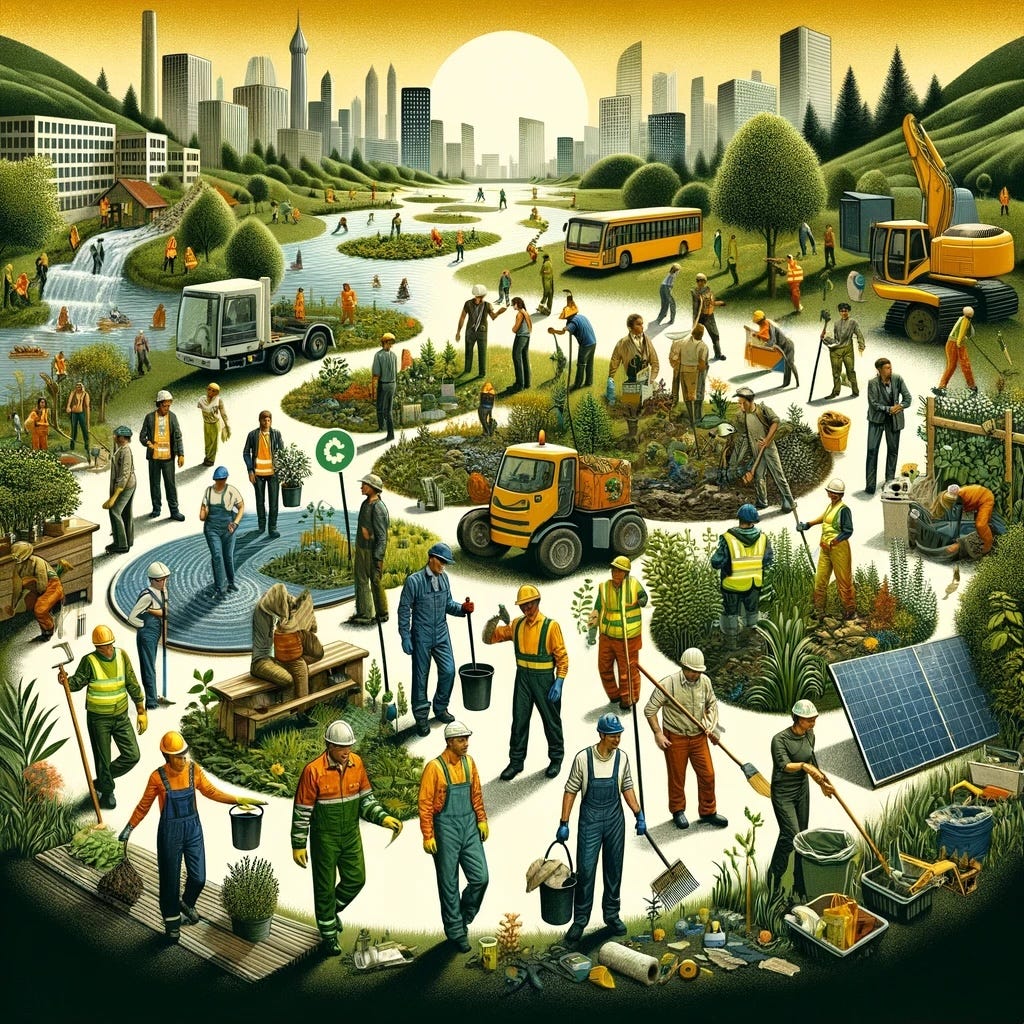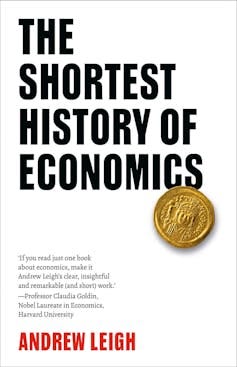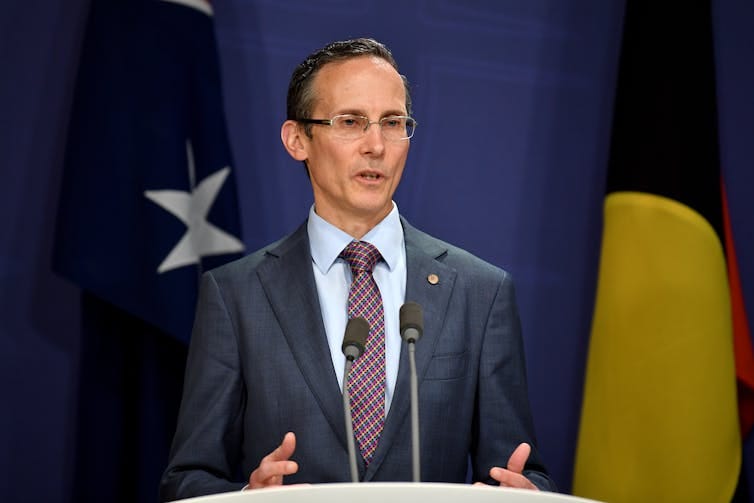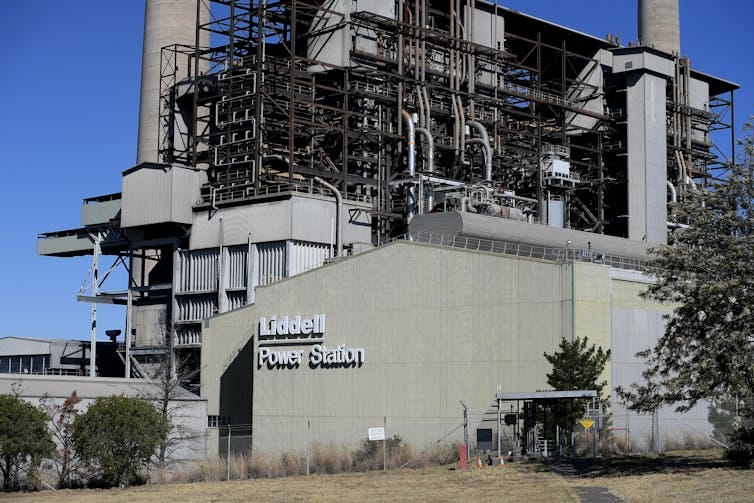Daniel Kahneman, who was, along with Elinor Ostrom, one of the very few non-economists to win the Economics Nobel award, has died aged 90. There are lots of obituaries out there, so I won’t try to summarise his work. Rather, I’ll talk about how it influenced my own academic career.
Read More »Month: March 2024
Towards deliberative Parliaments: Greens success at recent elections points the way
Elections over the last week have seen some pretty good outcomes for the Greens and some very bad outcomes for both Labor and the LNP.

Here’s what ChatGPT came up when I asked for a representation of Green Labor
In the Brisbane Council elections, the Greens got 23.1 per cent of the vote, barely behind Labor on 26.9. The combined total of exactly 50 per cent wasn’t reflected in terms of seats, mainly because of preference leakage and exhaustion, but I want to focus on the longer term implications here.
In Tasmania, the incumbent Liberals suffered a 12 per cent swing on primary votes, falling to 37 per cent, after a series of elections in which they received an absolute majority, or very close to it, on first preferences. Most of the aggregate loss went to independents and the Jacquie Lambie network with Labor and the Greens each picking up small gains.
That doesn’t mean that all the people who voted for JLN and independents switched from Liberals. More likely, the Greens (and maybe also) Labor picked up some Liberal voters, but lost ‘protest’ voters to JLN in particular. What’s really striking here is that the combined vote of Labor and the Liberals was below 66 per cent. “Other (including informal/blank)” comfortably outpolled Labor, and came close to beating the Liberals.
Finally, in the by-election for the South Australian seat of Dunstan (vacated by the former Liberal Premier), the Greens polled 22 per cent of the vote. Starting from a primary vote of 32 per cent, which would once have been considered disastrous, Labor won the seat comfortably on preferences, a rare by-election defeat for an opposition party.
Despite this striking evidence of dissatisfaction with the two-party system, journalists reported the Tasmanian outcome as a “hung Parliament”. This is a nonsense way of describing the situation. A hung jury is one that can’t reach a verdict. An election in which no party wins an outright majority of seats is a verdict rejecting the idea that the Parliament, or at least the Lower House, should be a rubber stamp for the winning party (or rather for the leader of that party) in between elections, when the voters have a chance to switch one ruling party for another. For some years, Tim Dunlop and I have been pushing the term “deliberative parliament” to describe this outcome.
The two-party system is one which is familiar and comfortable for the political class, including political journalists. It’s striking to observe that, while there are plenty of journalists who are clearly identified with either Labor or the Liberals, or can be seen as balanced between the two majors, there are none who align with the Greens, or Jacquie Lambie, or the teal independents, even in general terms.
All of these parties, along with the various rightwing parties that have won seats in Parliament are treated by the Press Gallery as alien intruders who will soon be gone. Similarly, a “hung parliament” of which we have seen at least a dozen in Australia, in recent years, is treated as an unfortunate aberration.
For the left, the big problem here is the difficulty of establishing a working relationship between Labor and the Greens. The only place this has worked consistently well is the ACT, where some form of Labor-Green coalition has held office since 2008. There are two big problems here. The first is the general problem of a centre-left coalition (or less formal arrangement) in which the centrist party (in this case Labor) is dominant, and the left party (the Greens) must take responsibility for policies that disappoint their voters. The second, local factor, is the toxic relationship between (large groups of) Green and Labor politicians and activists, of which Anthony Albanese is a notable exemplar.
One way or another, these difficulties will have to be resolved. That will take time, and perhaps some generational replacement, so that those making Labor-Green agreements won’t be distracted by the question of who did what to whom in 2010. But the days of pliant parliamentary majorities are drawing to a end, and democracy will be the better for it.
Monday Message Board
Another Monday Message Board. Post comments on any topic. Civil discussion and no coarse language please. Side discussions and idees fixes to the sandpits, please.
I’m now using Substack as a blogging platform, and for my monthly email newsletter. For the moment, I’ll post both at this blog and on Substack. You can also follow me on Mastodon here.
Monday Message Board
Another Monday Message Board. Post comments on any topic. Civil discussion and no coarse language please. Side discussions and idees fixes to the sandpits, please.
I’m now using Substack as a blogging platform, and for my monthly email newsletter. For the moment, I’ll post both at this blog and on Substack. You can also follow me on Mastodon here.
From micro to macro, Andrew Leigh’s accessible history covers the economic essentials: My review from The Conversation
Andrew Leigh’s The Shortest History of Economics is the latest in a series of such histories, mostly focused on particular countries.
It begins with a striking mini-history of household lighting, focusing on the amount of labour required to produce the light now given off by a standard lightbulb: 58 hours for a wood fire, five hours for a candle based on animal fat, a few minutes for an early electric lightbulb, and less than one second for a modern light-emitting diode.
The Shortest History of Economics – Andrew Leigh (Black Inc.)
Importantly, what is true of labour hours is also true of material inputs. Older technologies required felling a tree or killing an animal, but an LED uses the photoelectric properties of common crystals. It only needs tiny quantities. The input of electricity is similarly modest.
Start your day with evidence-based news.
Meanwhile, because workers in all kinds of activities have become more productive, the purchasing power of their wages, expressed in terms of services like lighting, has risen. The result is that services like lighting have become exceptionally cheap.
As this example shows, The Shortest History of Economics is not, as might be supposed, a history of economic thought (a topic primarily suited to retired economists like the author of this review). Rather, it is primarily a history of economic life, from Paleolithic times to the COVID pandemic.
The history is, however, informed by modern economics, included in the narrative in palatable doses.

Standards of living
The first half of the book, covering the period up to the Industrial Revolution, is mostly about technology. Leigh begins with the transition from hunter-gatherer societies – made up of relatively small groups of people, who followed their food sources around – to agriculture, which permitted and required larger settled populations.
The effect on living standards was ambiguous at best. Farmers were less likely than hunter-gatherers to suffer violent deaths or starve in winter, but they were almost permanently undernourished. They overworked to produce a surplus that enabled a small stratum of priests and warriors to live relatively luxurious lives.
The millennia following the agricultural revolution are covered pretty quickly, with a focus on developments in transport (mostly water transport) and trade. Leigh traces the gradual emergence of a global economy, culminating in the rise of European empires, whose reach depended on sail.
There are lots of interesting vignettes, covering topics such as social mobility. There wasn’t much, as can be seen by the persistence over centuries of the same surnames in high-status positions. More depressing is the discussion of the central role of the slave trade, which was a major source of labour in the Americas and income for European nations.
The second half of the book, covering the period after the Industrial Revolution, shifts the focus from technology to economic institutions and policy. The 19th century saw the rise of the corporation and the concentration of economic power.
This produced responses in the form of “anti-trust” legislation in the United States, usually referred to as “competition policy” in Australia. This remains an issue of central concern to Leigh in his day job, as assistant minister for Competition, Charities and Treasury.
The 19th century also saw the rise of the trade union movement and the beginning of an era of continuous struggle over the distribution of income between capital labour. The balance has ebbed and flowed.
As Leigh shows, labour has been losing ground since the 1970s in most countries, while those at the top of the income distribution have gained massively. The offsetting positive development is that the very poorest people in the world have generally improved their lot, thanks to the belated arrival of modern technology.

Andrew Leigh at a press conference in Sydney, August 23, 2023. Bianca De Marchi/AAP
Read more: Income redistribution or social insurance? A federal MP considers the future of the welfare state
Macroeconomics
The issues I have discussed so far have mostly concerned markets and prices, the topics studied by economists under the label “microeconomics”. But the 20th century also saw the emergence of “macroeconomics”, the analysis of booms, depressions, inflation and mass unemployment.
The key figure here was English economist John Maynard Keynes, whose General Theory of Employment, Interest and Money (1935) provided the theoretical basis for the use of public expenditure and taxation (fiscal policy) to stabilise the economy.
As Leigh notes in his introduction, The Shortest History of Economics is unusual among recent popular works on economics in covering both microeconomics and macroeconomics.
Despite proceeding briskly through millennia of economic history, Leigh manages to convey the essential points in a way that does not leave the reader feeling rushed through an incomplete argument. While it makes sense to begin by reading the book from beginning to end, it is also enjoyable to dip into it, more or less at random.
Inevitably, I have some points of disagreement. At a couple of points, Leigh gives uncritical credence to beliefs widely held among economists, but not supported by the evidence.
He repeats Adam Smith’s creation story for money as a more efficient alternative to barter. But a hundred years of anthropological evidence, beginning with my namesake Alison Hingston Quiggin and continuing to the work of the late David Graeber, suggests that money first emerged as a way of discharging debts (owed to the king whose face appeared on coins or as recompense for private injuries). It was only later adapted to use in commerce.
In his discussion of Keynesian macroeconomics, Leigh cites a popular rap video presenting a dispute between Keynes and Friedrich von Hayek, two of the great economists of the 20th century.
But in reality, although Hayek had criticised Keynes’ earlier Tract on Monetary Reform (1923), he did not even review his General Theory of Employment, Interest and Money. Arguably the most effective critic was A.C. Pigou, best known nowadays as the inventor of pollution taxes.
And Keynes was quite sympathetic to the arguments against economic planning Hayek presented in The Road to Serfdom (1944).
The idea of Hayek as Keynes’ primary antagonist is largely a piece of retroactive continuity (“retconning” in the jargon of genre fiction). The myth was created in the 1970s, following Hayek’s Nobel Prize in Economics in 1974 and his influence on political leaders, including Margaret Thatcher and Augusto Pinochet.
But these are quibbles, which will be of little concern to the general readership at which the book is aimed. As with all of the dozen or so books Leigh has produced since his election to Parliament (while also raising three children and maintaining a strenuous athletic regime – how does he do it?), The Shortest History of Economics is an engaging read, conveying economic insights to readers who would find a standard economics text both boring and impenetrable.
Monday Message Board
Another Monday Message Board. Post comments on any topic. Civil discussion and no coarse language please. Side discussions and idees fixes to the sandpits, please.
I’m now using Substack as a blogging platform, and for my monthly email newsletter. For the moment, I’ll post both at this blog and on Substack. You can also follow me on Mastodon here.
Old
In a few days time, I’ll be lining up in the 65-69 category for the Mooloolaba Olympic triathlon (1500m swim, 40km cycle, 10km run)[1]. People in this age category are commonly described as “aging”, “older”, “seniors”, “elders” and, worst of all, “elderly” (though this mostly kicks in at 70). The one thing we are never called is “old”. But this is the only term that makes any sense. Everyone is aging, one year at a time, and a toddler is older than a baby. Senior and elder are similarly relative terms. And “elderly” routinely implies “frail” (a lot of old people are frail, but many more are not.
What accounts for the near-universal squeamishness that surrounds the term “old”? Apart from the obvious fact that you are a bit closer to death, it’s not that bad being old. Even if not everyone can complete a triathlon, most people maintain (self-assessed) good health to age 85 and beyond, In most developed countries, old people can live a reasonably comfortable life without having to work. And on average, that’s reflected in measures of happiness.
Yet, at least in the Anglosphere, old people don’t seem to be happy in political terms. It’s voters over 65 who provide the core support for conservative parties and are most likely to welcome the drift to the far right represented by Trump and his imitators.
The pattern is particularly striking in the UK where the YouGov poll shows the right and far-right leading easily among voters over 65 (37% Tory + 28 % Reform), while gaining essentially no votes from those aged 20-24, where the Tories tie for 5th place with the SNP, behind Labor, Green, Reform and LibDems https://yougov.co.uk/politics/articles/48794-voting-intention-con-20-lab-46-28-29-feb-2024 [2].Presumably that reflects Brexit, a particularly irresponsible piece of nostalgia politics inflicted mostly by the old on the young.
But it’s the same in the US, Canada, Australia and (though mainly among women) New Zealand. While there has always been a tendency for old people to support the political right, it’s more marked now than it has ever been. And as is particularly evident with MAGA, there’s nothing conservative about this kind of politics. Its primary mode is authoritarian Christian nationalism.
In part, I think this reflects the increasing dominance of culture war issues, where views that were dominant 50 or 60 years ago are now considered unacceptable. Old people whose views haven’t changed in many years are likely to support the right on these issues.
I’d be interested in any thoughts on this.
fn1. Not expecting to do well, thanks to the hottest and stickiest summer I can remember, but I plan to finish.
fn2. A poll last year had the Tories on 1 per cent among young voters.
Dutton wants a ‘mature debate’ about nuclear power. By the time we’ve had one, new plants will be too late to replace coal
My latest in The Conversation via my Substack
If you believe Newspoll and the Australian Financial Review, Australia wants to go nuclear – as long it’s small.
Newspoll this week suggests a majority of us are in favour of building small modular nuclear reactors. A poll of Australian Financial Review readers last year told a similar story.
These polls (and a more general question about nuclear power in a Resolve poll for Nine newspapers this week) come after a concerted effort by the Coalition to normalise talking about nuclear power – specifically, the small, modular kind that’s meant to be cheaper and safer. Unfortunately, while small reactors have been around for decades, they are generally costlier than larger reactors with a similar design. This reflects the economies of size associated with larger boilers.
The hope (and it’s still only a hope) is “modular” design will permit reactors to be built in factories in large numbers (and therefore at low cost), then shipped to the sites where they are installed.
Coalition enthusiasm for talking about small modular reactors has not been dented by the failure of the only serious proposal to build them: that of NuScale, a company that designs and markets these reactors in the United States. Faced with long delays and increases in the projected costs of the Voygr reactor, the intended buyers, a group of municipal power utilities, pulled the plug. The project had a decade of development behind it but had not even reached prototype stage.
Other proposals to build small modular reactors abound but none are likely to be constructed anywhere before the mid-2030s, if at all. Even if they work as planned (a big if), they will arrive too late to replace coal power in Australia. So Opposition Leader Peter Dutton needs to put up a detailed plan for how he would deliver nuclear power in time. cr
So why would Australians support nuclear?
It is worth looking at the claim that Australians support nuclear power. This was the question the Newspoll asked:
There is a proposal to build several small modular nuclear reactors around Australia to produce zero-emissions energy on the sites of existing coal-fired power stations once they are retired. Do you approve or disapprove of this proposal?
This question assumes two things. First, that small modular reactors exist. Second, that someone is proposing to build and operate them, presumably expecting they can do so at a cost low enough to compete with alternative energy sources.
Unfortunately, neither is true. Nuclear-generated power costs up to ten times as much as solar and wind energy. A more accurate phrasing of the question would be:
There is a proposal to keep coal-fired power stations operating until the development of small modular reactors which might, in the future, supply zero-emissions energy. Do you approve or disapprove of this proposal?
It seems unlikely such a proposal would gain majority support.
Building nuclear takes a long time
When we consider the timeline for existing reactor projects, the difficulties with nuclear power come into sharp focus.
As National Party Senate Leader Bridget McKenzie has pointed out, the most successful recent implementation of nuclear power has been in the United Arab Emirates. In 2008, the UAE president (and emir of Abi Dhabi), Mohamed bin Zayed Al Nahyan, announced a plan to build four nuclear reactors. Construction started in 2012. The last reactor is about to be connected to the grid, 16 years after the project was announced.
The UAE’s performance is better than that achieved recently in Western countries including the US, UK, France and Finland.
In 16 years’ time, by 2040, most of Australia’s remaining coal-fired power stations will have shut down. Suppose the Coalition gained office in 2025 on a program of advocating nuclear power and managed to pass the necessary legislation in 2026. If we could match the pace of the UAE, nuclear power stations would start coming online just in time to replace them.
If we spent three to five years discussing the issue, then matched the UAE schedule, the plants would arrive too late.

Read more: Dutton wants Australia to join the “nuclear renaissance” – but this dream has failed before
It would take longer in Australia
Would it be possible to match the UAE schedule? The UAE had no need to pass legislation: it doesn’t have a parliament like ours, let alone a Senate that can obstruct government legislation. The necessary institutions, including a regulatory commission and a publicly owned nuclear power firm, were established by decree.
There were no problems with site selection, not to mention environmental impact statements and court actions. The site at Barakah was conveniently located on an almost uninhabited stretch of desert coastline, but still close enough to the main population centres to permit a connection to transmission lines, access for workers, and so on. There’s nowhere in Australia’s eastern states (where the power is needed) that matches that description.
Finally, there are no problems with strikes or union demands: both are illegal in the UAE. Foreign workers with even less rights than Emirati citizens did almost all the construction work.
Despite all these advantages, the UAE has not gone any further with nuclear power. Instead of building more reactors after the first four, it’s investing massively in solar power and battery storage.

Time to start work is running out
The Coalition began calling for a “mature debate” on nuclear immediately after losing office.
But it’s now too late for discussion. If Australia is to replace any of our retiring coal-fired power stations with nuclear reactors, Dutton must commit to this goal before the 2025 election.
Talk about hypothetical future technologies is, at this point, nothing more than a distraction. If Dutton is serious about nuclear power in Australia, he needs to put forward a plan now. It must spell out a realistic timeline that includes the establishment of necessary regulation, the required funding model and the sites to be considered.
In summary, it’s time to put up or shut up.
Monday Message Board
Another Monday Message Board. Post comments on any topic. Civil discussion and no coarse language please. Side discussions and idees fixes to the sandpits, please.
I’m now using Substack as a blogging platform, and for my monthly email newsletter. For the moment, I’ll post both at this blog and on Substack. You can also follow me on Mastodon here.